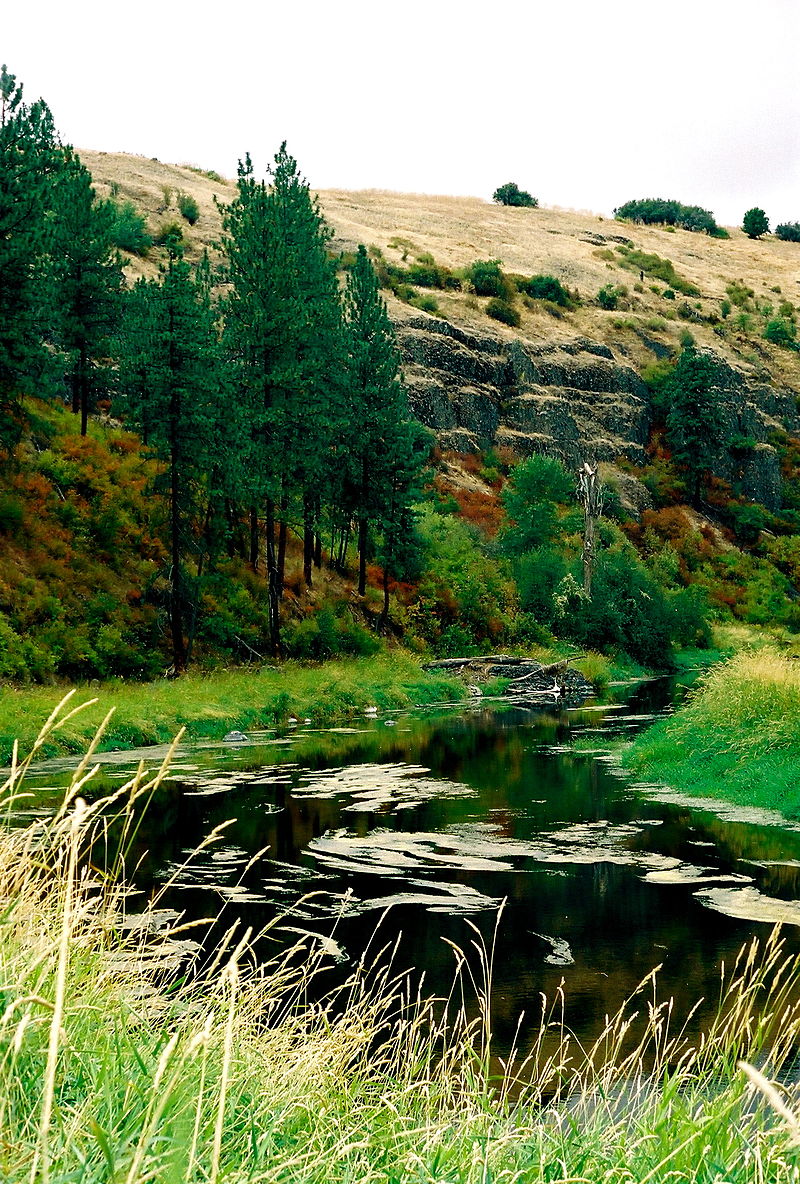
Spawning Salmon Habitat in the Palouse River Needs Management to Cool the Water Temperature Photograph Attribution: Jgreenbook at English Wikipedia, Public domain, via Wikimedia Commons
Idaho Press Release Submissions: Idaho Statesman, Lewiston Tribune, Moscow-Pullman Daily News, Spokane Spokesman-Review 3-9-17
Recovery Plan for Salmon Habitat on Palouse River Receives Public Comments
The Idaho Department of Environmental Quality solicited comments from the public on ways to decrease the Palouse River water temperature to improve spawning salmon habitat. On February 20, Environmental Review, Inc. provided suggestions such as increasing shade from trees along the creeks and river by increasing the population of wolves in the watershed to control browsing of tree seedlings by deer and elk. That beneficial happenstance occurred in Yellowstone National Park with the reintroduction of wolves over 20 years ago and was found to increase willow stands and shade which decreased the river water temperature and improved the salmon habitat. Wildlife agencies have recently been criticized for killing wolves in Idaho without considering alternatives as required under the National Environmental Policy Act. The group also suggested that an alternative which might be considered is relocating unwanted wolves to the Palouse River region. Another unexpected benefit observed in the Yellowstone study was an increase in overall biodiversity such as beaver and nesting birds. The group also suggested conducting a priority-based allocation of resources evaluation to balance efforts toward reducing sediment loads and increasing shade to improve the salmon habitat. The State of Idaho resource planners expect that 10 years may be needed to reduce the river water temperature to reach desired goals. Benjamin Wagner, Project Manager with Environmental Review, Inc. is enthusiastic that appropriate wildlife management may help improve the salmon habitat. He said “In the Yellowstone experiment, one keystone predatory species, wolves exhibited a necessary dynamic in the riparian landscape. They turned deer away from important young plants such that the plant community statistics improved. This proposed approach may increase the plant numbers so that the Palouse River returns to a natural state. Salmon populations can succeed in the future with some help.” To see full version of comments visit:
Information about the Palouse River Watershed can be found here: